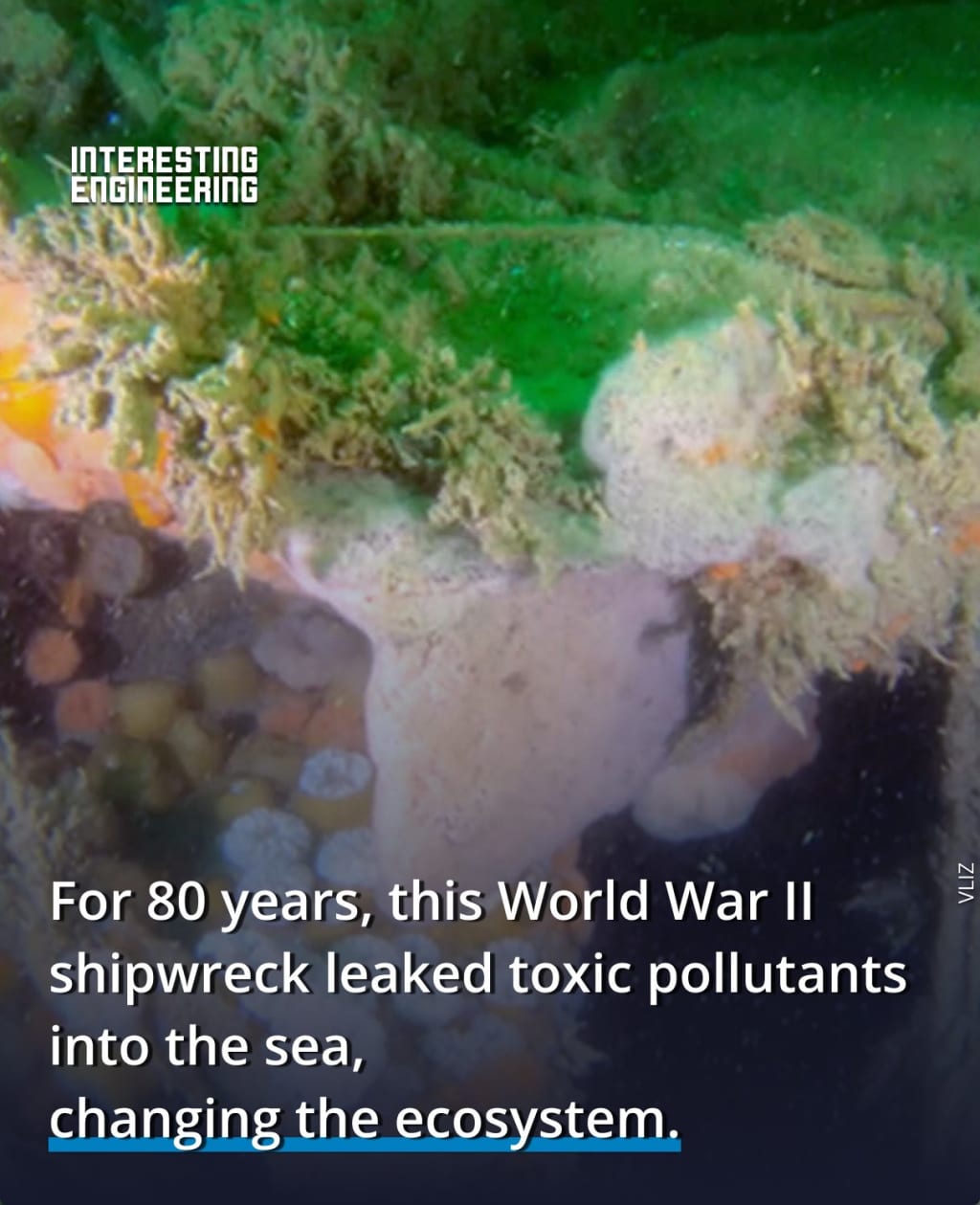For 80 years, This World War II Shipwreck Leaked Toxic Pollutants into the Sea, Changing the Ecosystem
"Today, new shipwrecks are removed for this exact reason."

The year is 1942. The atmosphere is abuzz with the sounds of the Second World War. The German Navy took over a fishing trawler, V 1302 John Mahn, for use as a Vorpostenboot, or patrol boat, for Operation Cerberus, or Channel Dash, a German naval operation. Unfortunately, V 1302 John Mahn was the only German ship sunk by UK bombers during the entire Channel Dash. It has rested in the Belgian North Sea ever since.
Eighty years later, researchers have found that the shipwreck is leaking hazardous pollutants, such as explosives and heavy metals, into the North Sea ocean floor sediment, influencing the marine microbiology around it and changing the ocean floor.
That's not it. The seabed of the North Sea is covered in thousands of war 'relics' - ship and aircraft wrecks, warfare agents, shells, and bombs. These wrecks contain dangerous substances like petroleum and explosives that are detrimental to the marine environment.
"The general public is often quite interested in shipwrecks because of their historical value, but the potential environmental impact of these wrecks is often overlooked," Ph.D. candidate Josefien Van Landuyt, of Ghent University, who analyzed the wreck, said in a statement.
"While wrecks can function as artificial reefs and have tremendous human story-telling value, we should not forget that they can be dangerous, human-made objects which were unintentionally introduced into a natural environment," Van Landuyt continued. "Today, new shipwrecks are removed for this exact reason."
Their findings were published in the Frontiers in Marine Science.
Varying degrees of toxic pollutants were found around the shipwreck
Van Landuyt and the team wanted to examine if the old shipwrecks were 'still' shaping the local microbial communities and if they continued to affect the surrounding sediment. "This microbial analysis is unique within the project," explained Van Landuyt.
The researchers gathered steel hull and sediment samples from and around the shipwreck to analyze the bio- and geochemistry around it.
They discovered different concentrations of toxic pollutants depending on the distance from the shipwreck. The press release found heavy metals (such as nickel and copper), polycyclic aromatic hydrocarbons (PAHs; chemicals that occur naturally in coal, crude oil, and gasoline), arsenic, and explosive compounds.
While the highest metal concentrations were found in the sample closest to the ship’s coal bunker, the freshly deposited sediment in the wake of the wreck had a high metal content.
The ship had also influenced the microbiome around it. Known PAH-degrading microbes like Rhodobacteraceae and Chromatiaceae were found in samples with the highest pollutant content. Sulfate-reducing bacteria (such as Desulfobulbia) were present in the hull samples, most probably leading to the corrosion of the steel hull.
More shipwrecks need to be sampled
The study is just beginning. "People often forget that bTelow the sea surface, we, humans, have already made quite an impact on the local animals, microbes, and plants living there and are still making an impact, leaching chemicals, fossil fuels, heavy metals from — sometimes century-old — wrecks we don’t even remember are there," said Van Landuyt.
"We only investigated one ship, at one depth, in one location. To get a better overview of the total impact of shipwrecks on our North Sea, a large number of shipwrecks in various locations would have to be sampled," Van Landuyt concluded.
Van Landuyt's work is part of the North Sea Wrecks project.
abstract:
Historic shipwrecks form an anthropogenic landmark in marine environment, yet their influence on the local geochemistry and microbiology remains largely unexplored. In this study, sediment and steel hull samples were taken around the V-1302 John Mahn, a World War II shipwreck, at increasing distance from the wreck, in different directions. Polycyclic aromatic hydrocarbons (PAH’s), explosives, and heavy metal levels were determined and related to the microbial composition. Benz(a)anthracene and fluoranthene remain present at the mg kg-1 level, probably originating from the coal bunker. These PAH’s indicate that the wreck is still influencing the surrounding sediments however the effects are very dependent on which side of the wreck is being studied. Known PAH degrading taxa like Rhodobacteraceae and Chromatiaceae were more abundant in samples with high aromatic pollutant content. Moreover, sulphate reducing bacteria (such as Desulfobulbia), proven to be involved in steel corrosion, were found present in the biofilm. This study shows that even after 80 years, a historic shipwreck can still significantly steer the surrounding sediment chemistry and microbial ecology.
About the Creator
Enjoyed the story? Support the Creator.
Subscribe for free to receive all their stories in your feed. You could also pledge your support or give them a one-off tip, letting them know you appreciate their work.






Comments
There are no comments for this story
Be the first to respond and start the conversation.